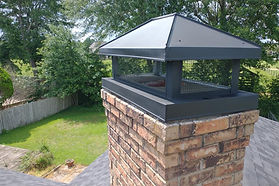
When it comes to maintaining a safe and functional home, many homeowners overlook one vital component: the chimney. While it may seem like a simple structure, a chimney plays a critical role in venting harmful gases and smoke from your fireplace or heating system. Regular professional chimney inspections are essential to prevent hazards such as fires, carbon monoxide leaks, and structural deterioration. But what exactly does a chimney inspection involve? Knowing what to expect can help you prepare and ensure your home remains secure and efficient.
The process typically begins with scheduling an appointment with a certified chimney professional. It’s important to choose someone with proper credentials, such as a technician certified by the Chimney Safety Institute of America (CSIA). Once the technician arrives, they will ask about your chimney usage and any issues you've noticed, such as strange odors, smoke backflow, or drafts. This conversation helps the inspector tailor the examination to your chimney’s specific needs and history.
The most common inspection is a Level 1, which is recommended annually for chimneys in regular use without any known issues. During a Level 1 inspection, the technician will examine all readily accessible parts of the chimney, both inside and out. This includes the firebox, flue, chimney cap, and crown. They’ll look for signs of creosote buildup, blockages, cracks, water damage, or any deterioration in the chimney’s lining or masonry. Tools like flashlights, mirrors, and sometimes simple cameras may be used to ensure a thorough check.
If there has been a recent visit Chimney Sweep Georgetown fire, significant weather damage, or changes to your heating system, a Level 2 inspection may be necessary. This level is more in-depth and includes everything from Level 1, plus a video scan of the chimney flue using specialized cameras. These advanced tools help detect hidden issues like internal cracks, broken flue tiles, or misaligned components that aren't visible during a standard inspection. A Level 2 inspection is also required before selling a home or after major natural events like earthquakes or storms.
In rare cases, a Level 3 inspection is needed, especially if severe hazards are suspected. This level may involve removing parts of the chimney or surrounding walls to access concealed areas. It’s typically only recommended when a serious problem is evident and other methods haven’t identified the root cause.
Once the inspection is complete, the chimney professional will provide a detailed report outlining their findings. This report may include photographs, video footage, and written assessments. If repairs or cleaning are necessary, they will offer recommendations and an estimate for services. This stage is your opportunity to ask questions and understand the scope of any problems found.
In short, a professional chimney inspection is a comprehensive process designed to ensure the safety and functionality of your chimney. It provides peace of mind, protects your property, and helps you avoid costly repairs down the road. With annual inspections and timely maintenance, you can keep your chimney in peak condition and enjoy a warm, worry-free home year after year.

